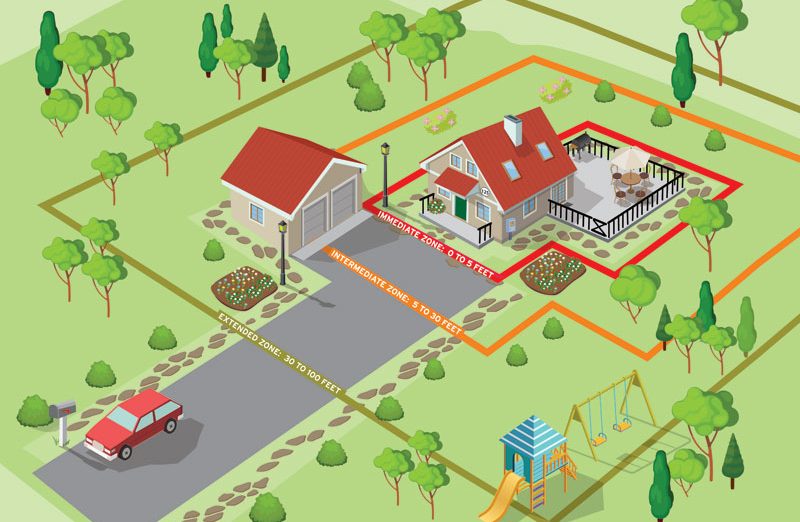As Silicon Valley woke to hazy sunrises and worsening air quality, wildfires further north scorched nearly 3,000 miles of land. More than 14,000 firefighters, including three engines from Santa Clara’s Fire Department (SCFD), provided aid to one of the largest disasters in California history.
A similar 1980 wildfire in San Bernardino motivated Jack Cohen, retired Fire Science Researcher with the US Forest Service, to find a better way to protect residential areas.
“Some communities don’t believe a fire will ever happen where they’re at,” said Cohen, referring to the lack of fire suppression techniques. “Unfortunately, time is showing us that it does happen. Fire has no boundaries and no preference for where it burns.”
In 2017, the government spent over $2 billion on firefighting efforts. Very little of it was allocated to prevention efforts, despite extensive research showing it is the best method to decrease fire damage.
The primary fire prevention strategy focuses on protecting the home ignition zone. Cohen discovered the zone in his initial research, finding this was the most important factor in determining whether a home was destroyed by fire.
The zone is divided into 3 parts.
The immediate zone is 1 to 5 feet from the exterior of the house. All gutters should be cleaned of debris, shingles should be tightly placed on roofs, metal mesh installed and flammables removed from exteriors.
Next is the intermediate zone from 5 to 30 feet, where lawns should be kept short, trees should be spaced 18 feet and fuel breaks should be created with concrete.
Finally, the extended zone at 30 to 200 feet should ensure no dead plants or small conifers exist.
It isn’t just homes in rural areas that are at risk of ignition. As the Oakland fires of 1991 showed, even urban residential areas like Santa Clara may be in danger. The City’s proximity to the wilderness may be the threat.
“Homes at the edges of wildlands where fires can spread rapidly and then encounter structures are at greater risk than those farther away. This is called the Wildland-Urban Interface (WUI),” said Bill Gabbert, a firefighter and researcher for 30 years.
Climate experts attribute the upsurge in more destructive fires to hotter weather drying out vegetation and lack of controlled burns clearing out ground debris. They also claim that expanding housing into previously undeveloped rural areas increases the risk of urban fires.
“This risk is significant enough in our state and county that our firefighters are also trained in WUI firefighting,” said Drew Miller, Battalion Chief and Public Information Officer for the SCFD, “and two of our apparatus are designated to respond to these types of incidents under a mutual aid agreement with both the State of California and County of Santa Clara.”
The danger doesn’t come from the fire itself, but from embers.
“If the vegetation is thick enough to carry a fire, and if the vegetation is close to structures, the buildings can ignite. But burning embers from an intensely burning wildfire can be lofted by the rising air and be transported over a mile. Many homes are ignited by one or more embers,” said Gabbert.
City programs for weed and brush removal also decrease risk. Fire prevention specialists ensure areas such as dry creek beds or freeway on/off-ramps do not become fire hazards.
“The most effective means of fire prevention in the home is through ensuring compliance with building codes and eliminating risk factors,” Miller said. Such risks include unattended cooking or smoking indoors.
When it comes to fire, a homeowner’s responsibility could prevent financial losses — and save lives.






